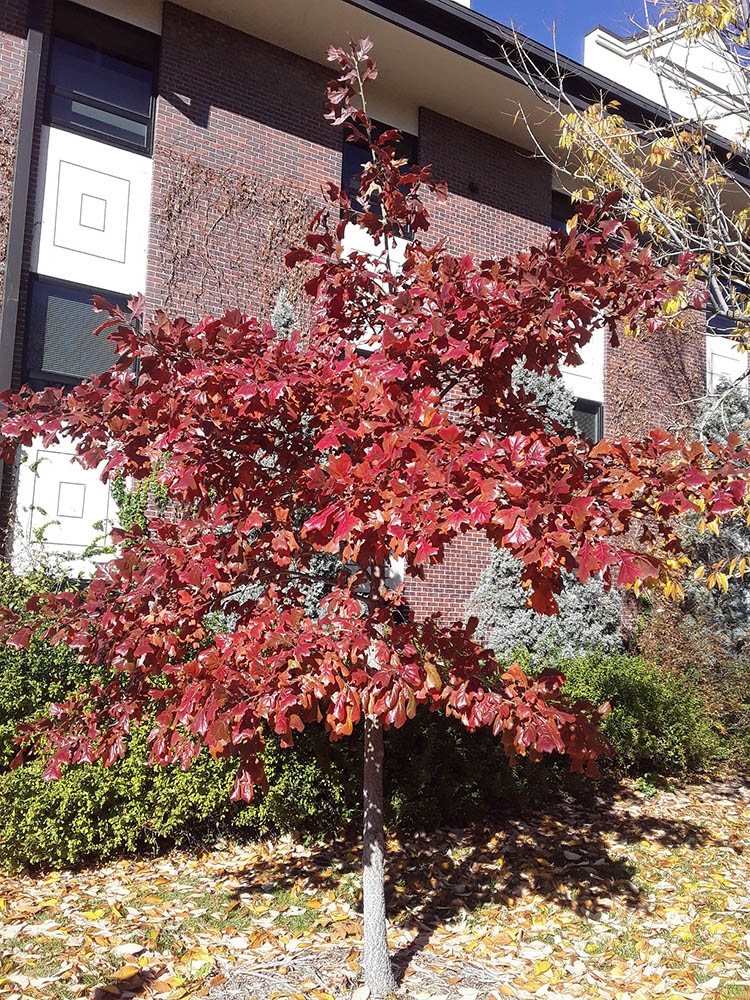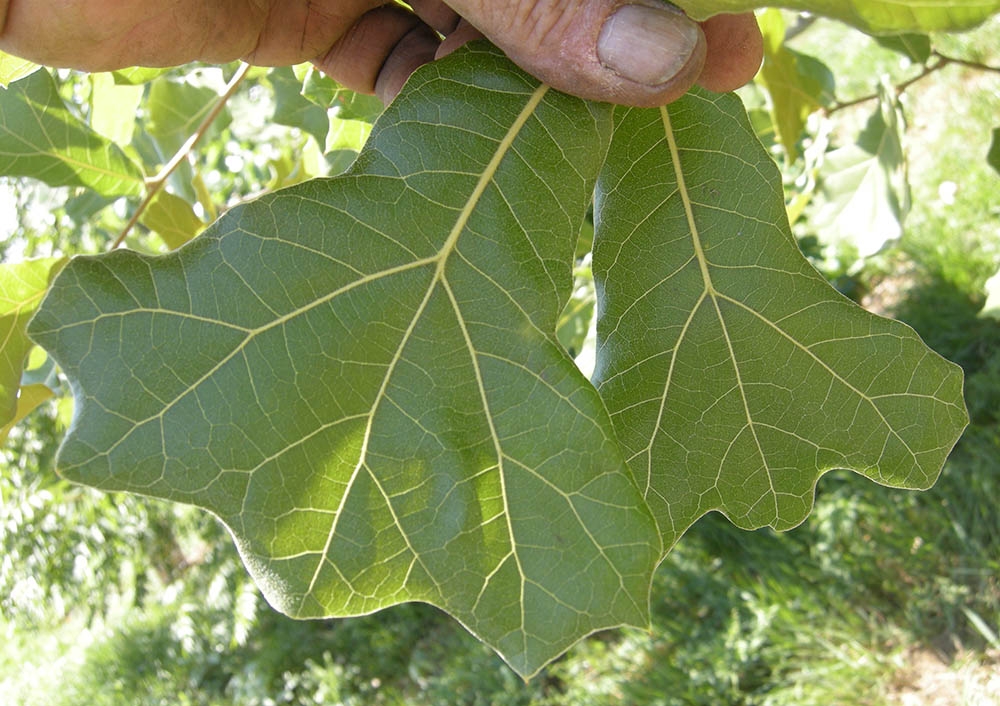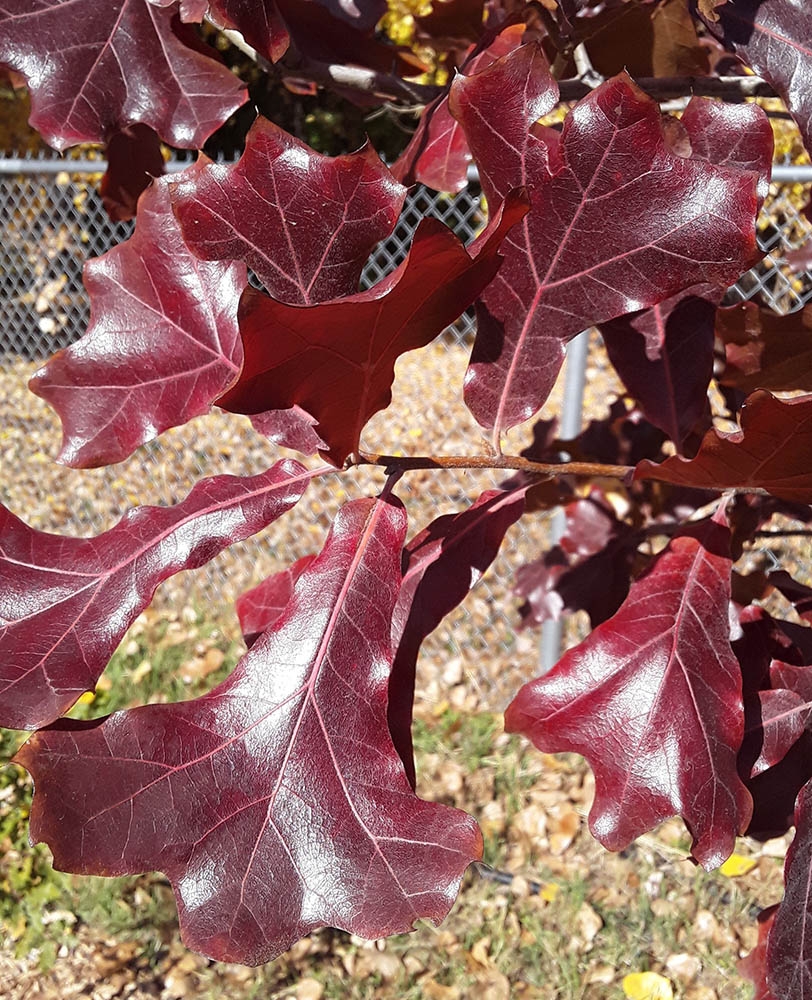Are We Running Out of Trees for the Denver Area?
Now that I might have your attention, the answer is no way, no how! What I’m really talking about is new kinds of trees we can bring into our urban forests to make them more resilient in the face of the increasing challenges of the Front Range climate. Over the past decade, experts have recommended new tree species for the Denver area, but only a dozen or so trees we all know well continue to make up most new plantings. The pace of change is glacial.
To help move the needle a tiny bit, I’d like to highlight one tree species that I think could have a good future here—the blackjack oak (Quercus marilandica). First, its name is really appealing, with a rather rakish and even outlaw connotation. It reminds me of casinos, of the hand-held weapon often carried by Dick Tracy’s criminal enemies, of that unusual anise-flavored chewing gum and of former First Lady Jackie O’s father John V. “Black Jack” Bouvier III, who was noted for drinking, gambling and philandering. (More on that last quality in a moment).
I’m also very fond of blackjack oak’s tough, leathery leaves, which unlike almost all oaks in temperate North America have a wedge shape, their widest point found at the slightly undulating, sometimes nearly blunt end. Being an oak it possesses longevity and the strength to tolerate snow loads. Having a relatively modest stature, it’s more suitable for smaller city properties than its taller brethren like the bur or northern red oaks. Perhaps even better for our area, blackjack oak handles drought and heat with ease and if asked will grow uncomplainingly in some of the poorest soils. I will admit, however, that it’s not the fastest-growing tree, but good things come to those who wait, no?
Now let’s talk about the all-important issue of the blackjack oak’s fall foliage color, one of the key factors in assessing a tree’s marketability. Renowned tree authority Dr. Michael Dirr gave the underwhelming review that its fall color is “at best yellow-brown, occasionally flashes of bronze-red.” However, many of my contacts in the Midwest, where the tree is a fairly common native, say it almost always colors pleasingly in the fall, from orange to red to purple. In support of their position, we now have the experience here of three blackjack oaks purchased in the spring of 2011 from a Missouri nursery for the Regis University Arboretum. Two of them have reliably displayed very bright red-orange fall color, and the third so far has had a refined maroon-wine color.
The foliage of the first two blackjack oaks—but not the third—has a mixture of leaf shapes, some with lateral lobes, which could indicate they are hybrids with another oak species such as black oak (Quercus velutina). This is possible given that oaks are the biggest philanderers of the northern hemisphere temperate trees. Collecting acorns to grow pure species of oaks can be a daunting task because if there are several species in an area, they may eagerly interbreed (if I can be pardoned for attributing eagerness to trees) so the offspring may be surprisingly different from the seed parent. This can work to our advantage, though, as in the case of the two Regis trees where hybridity seems to have conferred on them not only greater vigor but also brighter fall color than the third one that has the purer genetics. For me both the pure species of blackjack and the hybrid deserve more planting in our region, and we shouldn’t shy away from exploiting the benefits many oak species provide with their philandering ways.
The ninth annual Tree Diversity Conference Friday, March 10. Learn more about attending the conference in person or joining online.
This article was contributed by Sonia John, chair of the organizing committee of the Tree Diversity Conference, a joint program of Denver Botanic Gardens and the University of Denver Arboretum.
Gallery



Add new comment